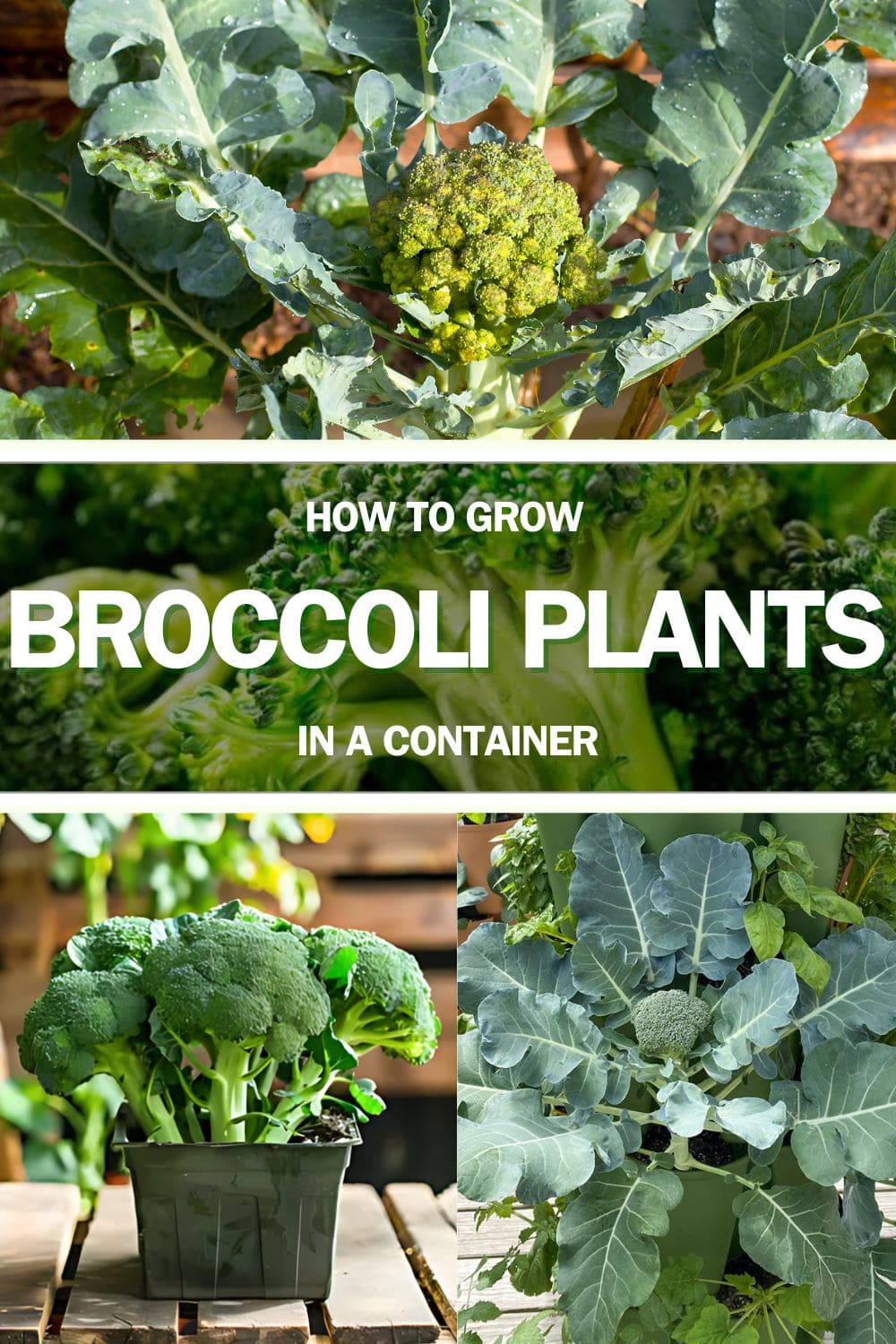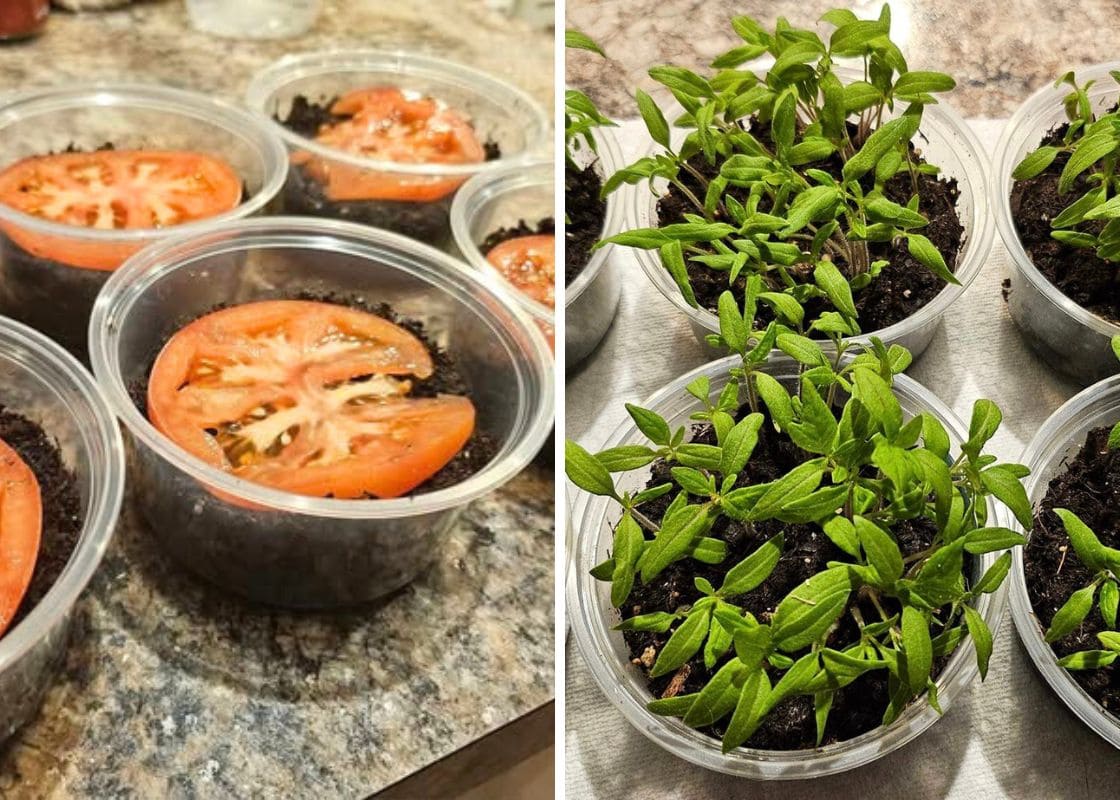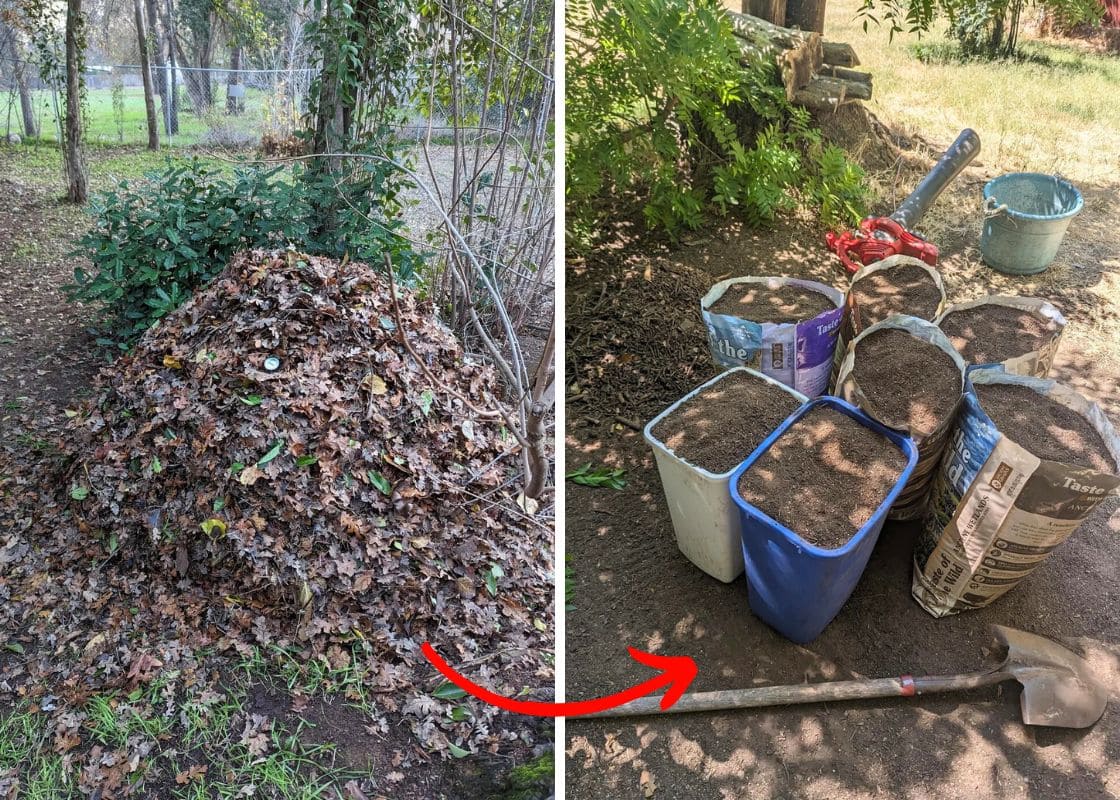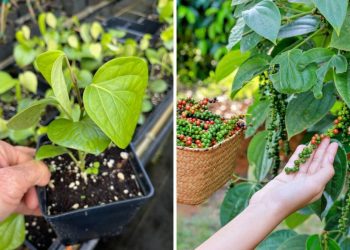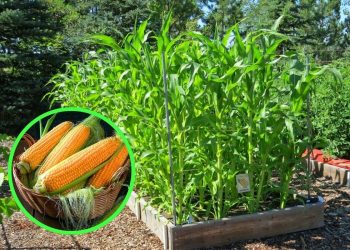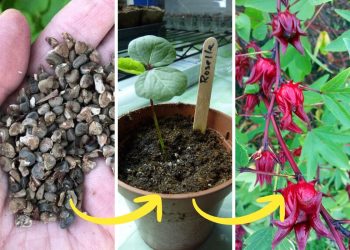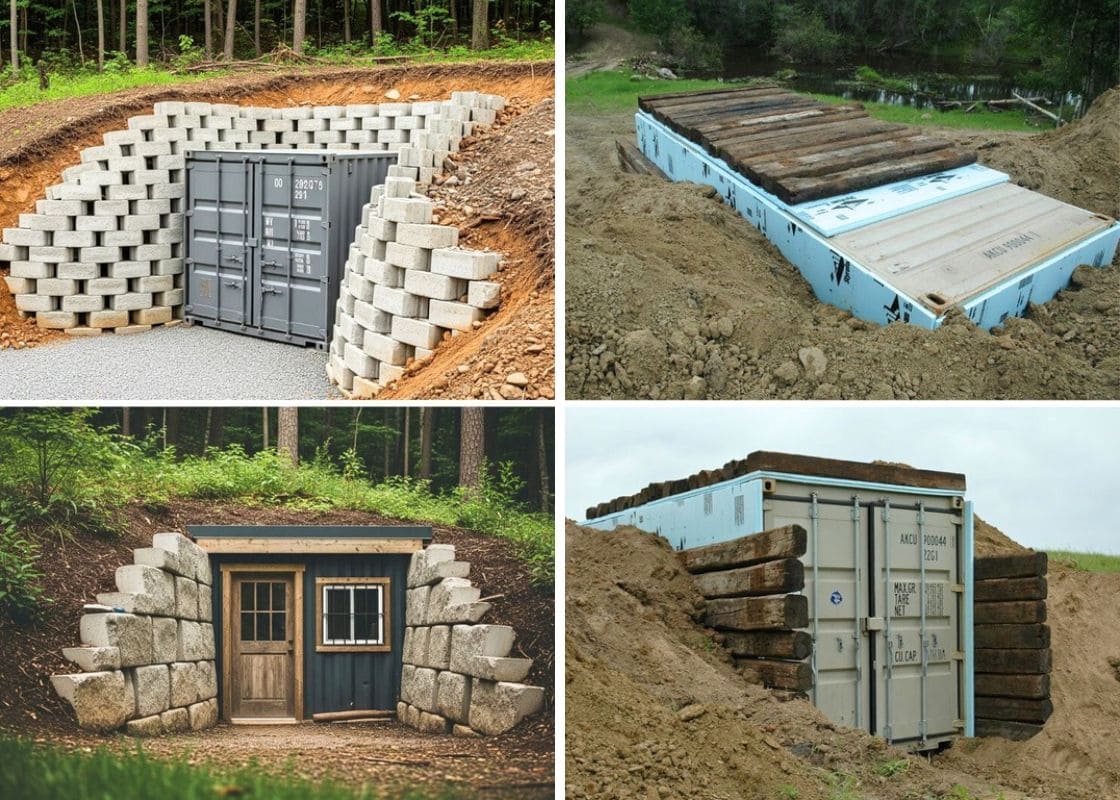Broccoli is a kitchen staple, it’s packed with vitamins and antioxidants, making it a favorite in many healthy diets.
If you don’t have a large garden or live in an apartment, don’t worry – growing broccoli in a container is a perfect solution.
With the right container and care, you can cultivate this nutritious veggie right on your balcony or windowsill.
Preparation
Choose the Right Container
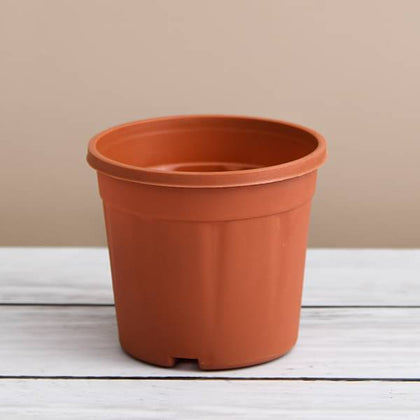
Broccoli plants have deep roots, so you’ll want a container that’s at least 12 inches deep and wide.
You can use anything from a large pot to a wooden box, as long as it has good drainage.
If water sits at the bottom, your broccoli might get root rot, and nobody wants that!
Gather Your Supplies
Next up, you’ll want a high-quality potting mix with the right nutrients and drainage properties, not just any old dirt from your backyard.
Adding some well-rotted compost can give your broccoli an extra nutrient boost and don’t forget to grab some broccoli seeds or seedlings,
Finally, prepare a bit of mulch as mulch helps keep the soil moist and cool, which broccoli loves.
Growing Broccoli In A Container From Seeds
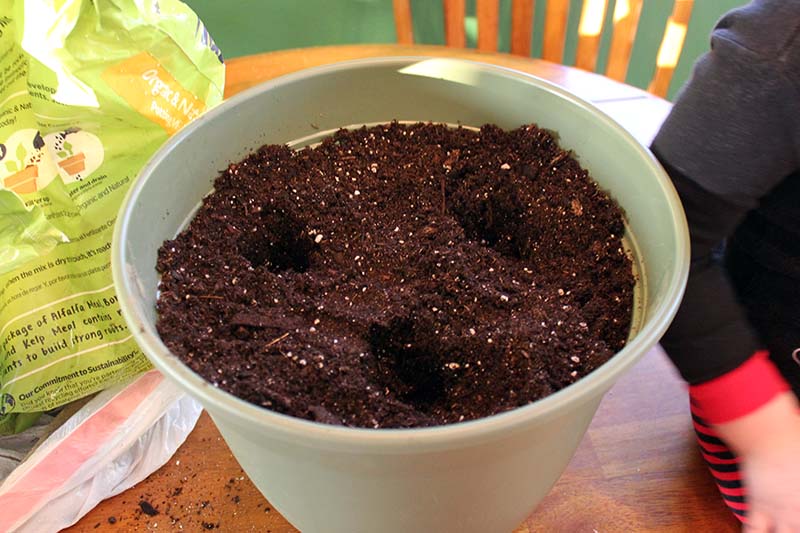
First, fill your container with the potting mix and plant your broccoli seeds about a quarter-inch deep directly in the container.
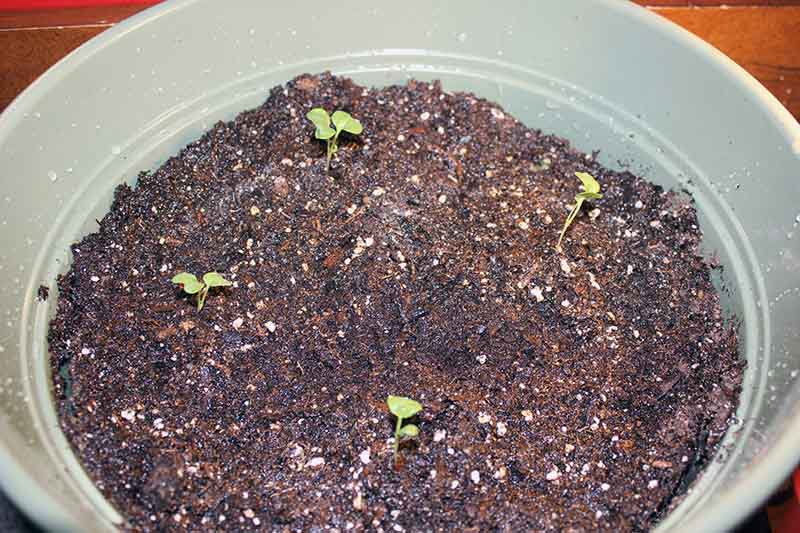
Keep the soil moist but not waterlogged. Broccoli seeds usually germinate in about 7 to 10 days.
Once your seeds have sprouted, they need plenty of light. Your seedlings need about 14 to 16 hours of light per day.
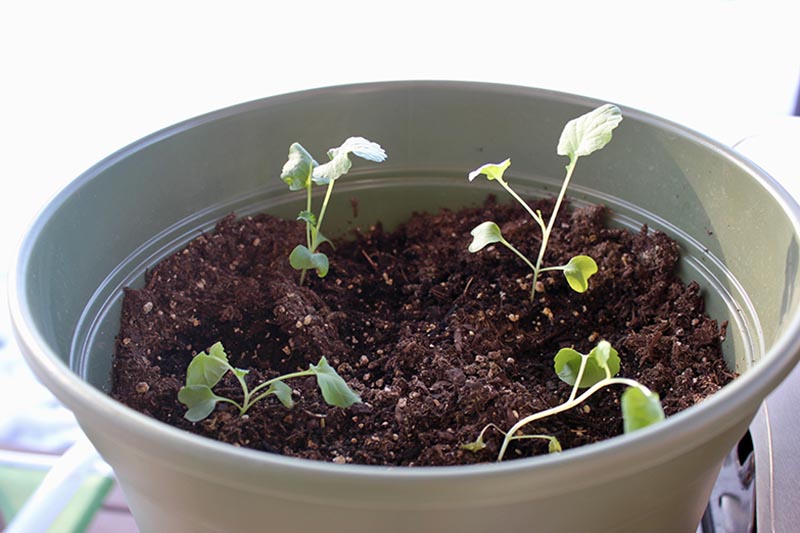
After about four to five weeks, your seedlings should be ready to move outdoors. But don’t just plop them outside!
Start by placing them in indirect sunlight for a few hours each day, and slowly increase the time and intensity of the light.
Care for Broccoli In A Container
Light
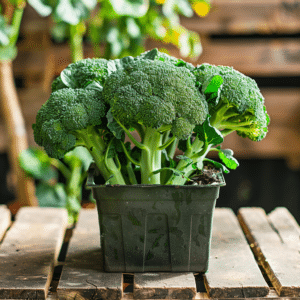
Broccoli loves the sun, but it also enjoys cool temperatures. Aim for about six to eight hours of direct sunlight each day.
If you live in a hot area where temperatures often exceed 80°F, consider placing your container in a spot that gets some afternoon shade.
Soil and Water
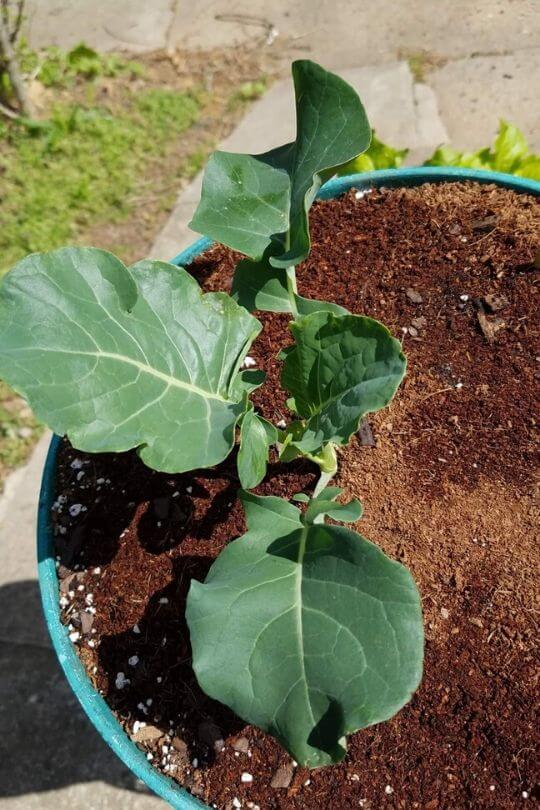
Broccoli needs well-draining soil that’s rich in organic matter. Keep the soil consistently moist but not waterlogged.
A good rule of thumb is to water your broccoli when the top inch of soil feels dry.
You need to avoid watering from the top to prevent the heads from rotting. Instead, water at the base of the plant.
Temperature and Humidity
Broccoli is a cool-season crop, thriving best in temperatures between 65°F and 70°F.
If it gets too hot, your broccoli might bolt, which means it will start flowering and stop producing those tasty heads.
Fertilizer
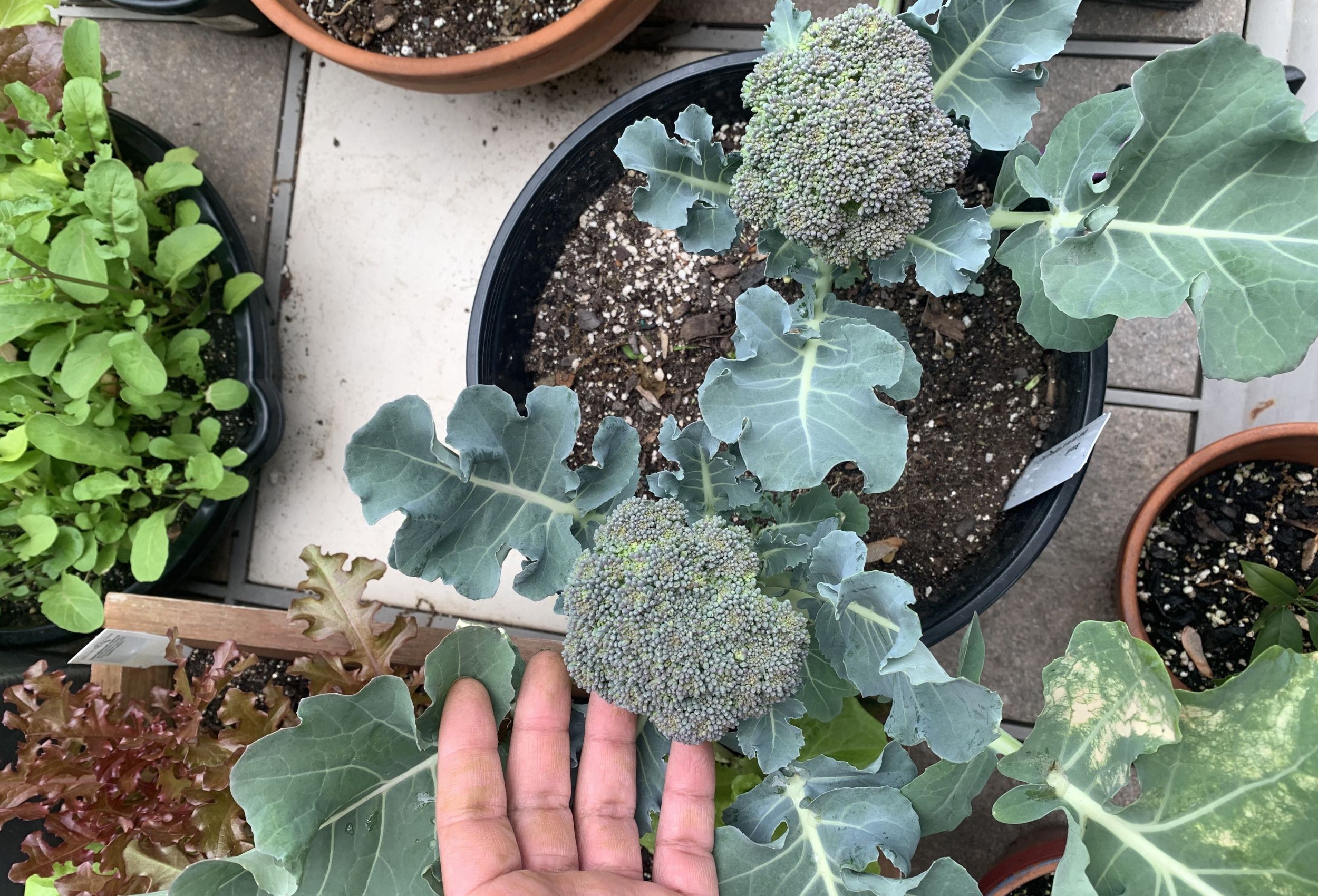
You should use an organic fertilizer every few weeks to keep it growing strong.
Look for fertilizers specifically designed for vegetables, and follow the instructions on the package.
Also, organic options like seaweed, bone meal, or fish emulsion work great.
Pruning
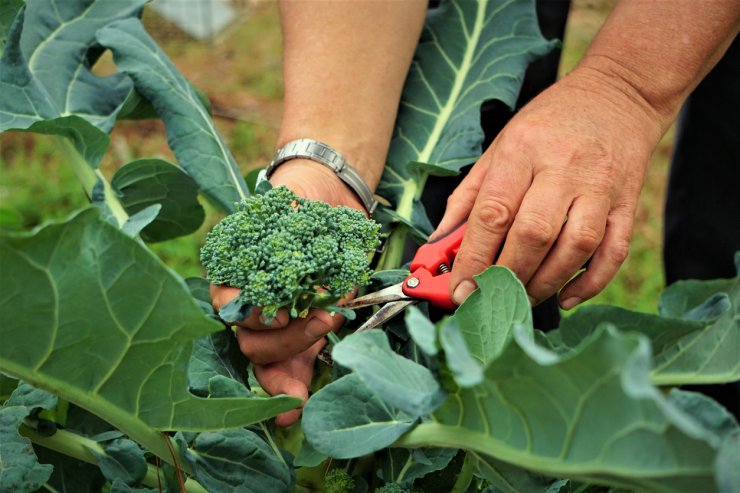
Pruning isn’t a big deal for broccoli, but removing yellowing leaves can help the plant focus its energy on growing those delicious heads.
Pests and Diseases
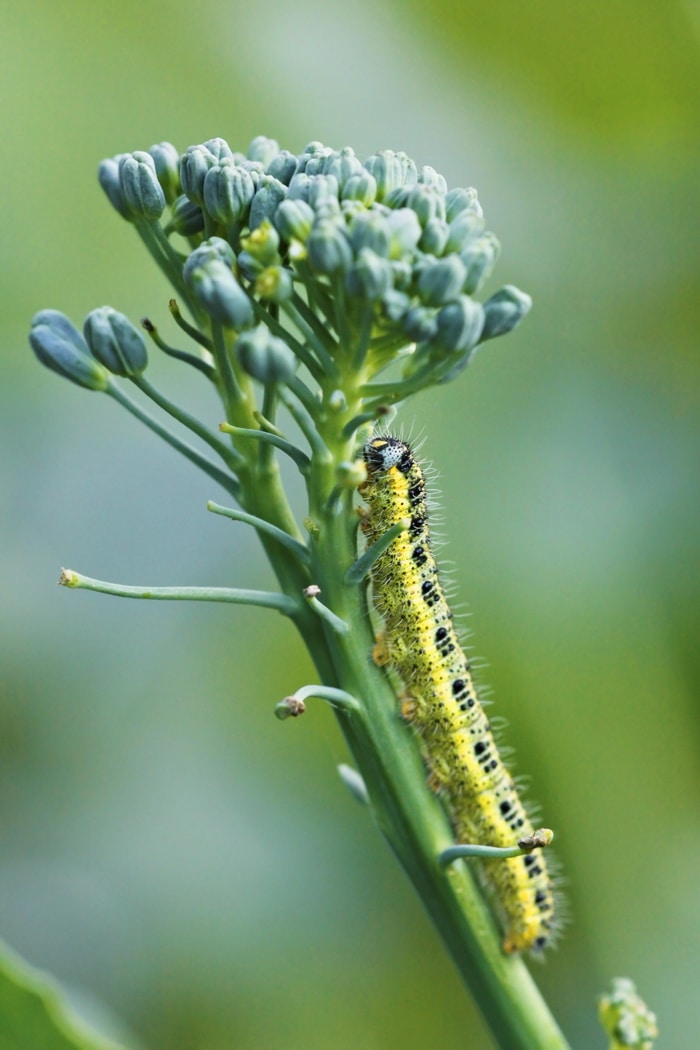
We have cabbage worms loving munching on broccoli leaves. You’ll know they’re around if you see holes in the leaves.
The best way to deal with them is to check the undersides of the leaves regularly and pick off any worms you find.
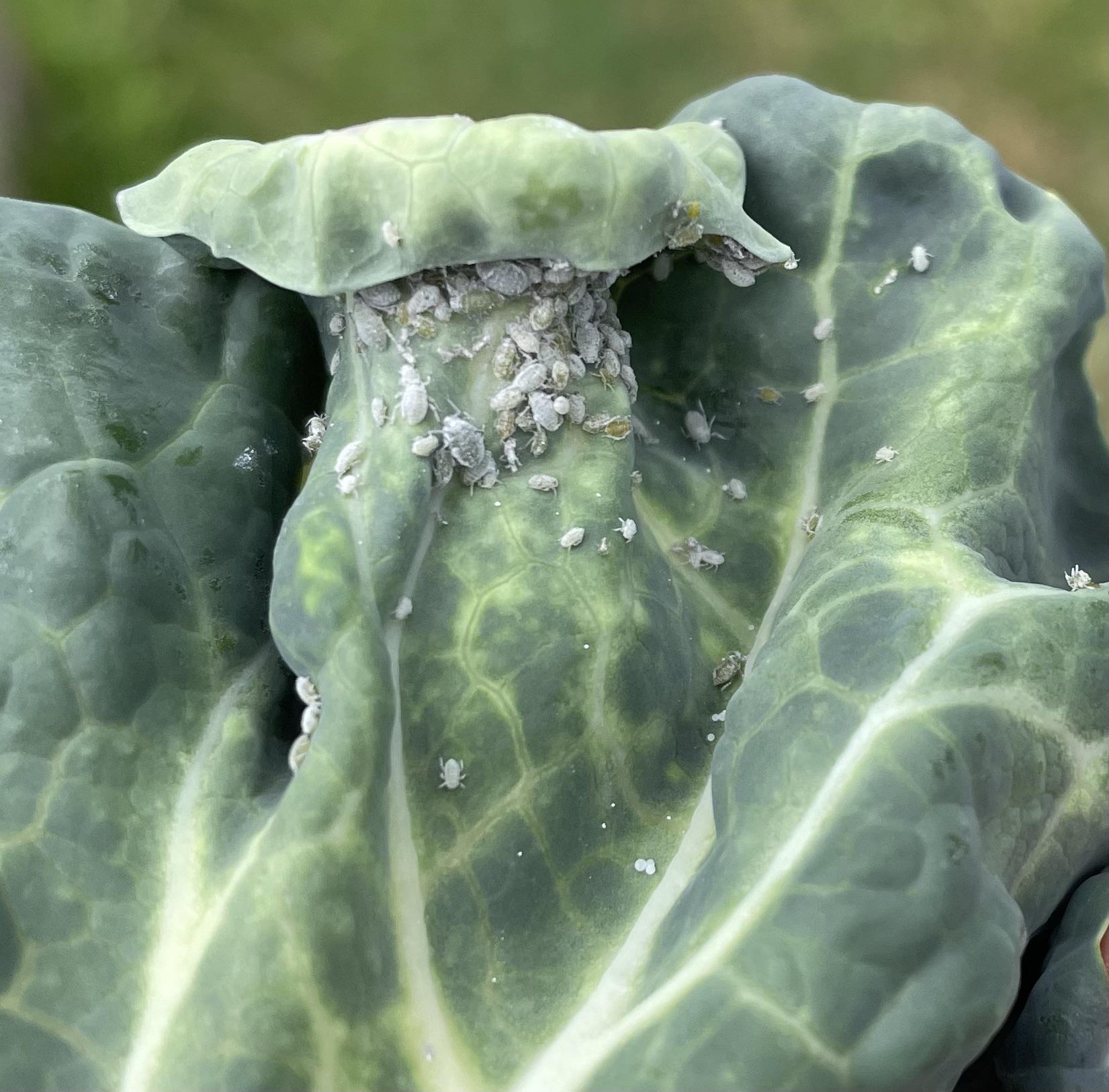
Next, there’s the aphids. These tiny, sap-sucking insects can cause a lot of damage if left unchecked.
They usually hang out on the undersides of leaves and can be green, black, or gray and a strong spray of water can knock them off.
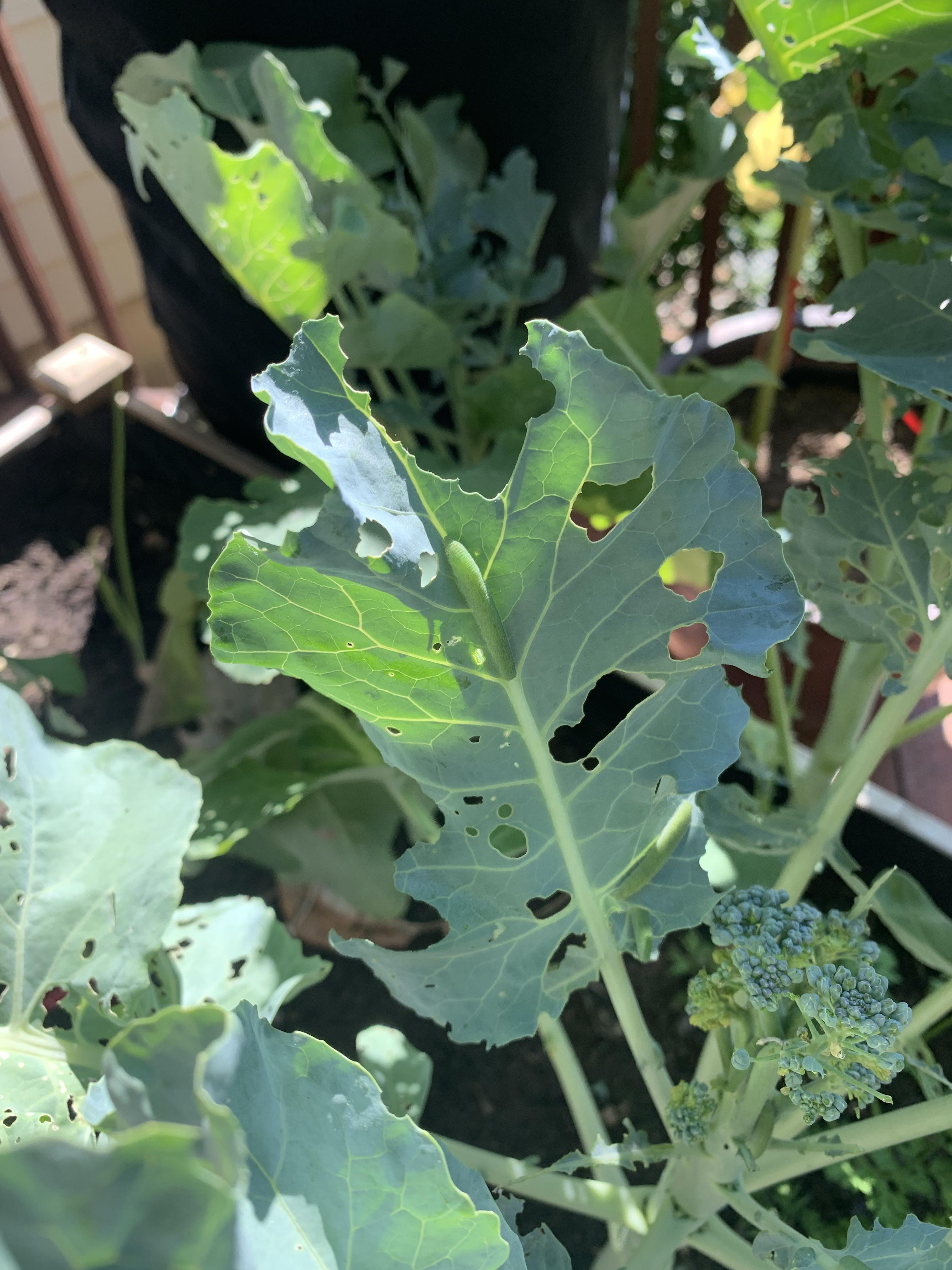
Don’t forget about flea beetles. These small, jumping beetles can create tiny holes in the leaves, making them look like they’ve been hit with a shotgun.
Floating row covers can help keep them away, and neem oil can be effective if you already have an infestation.
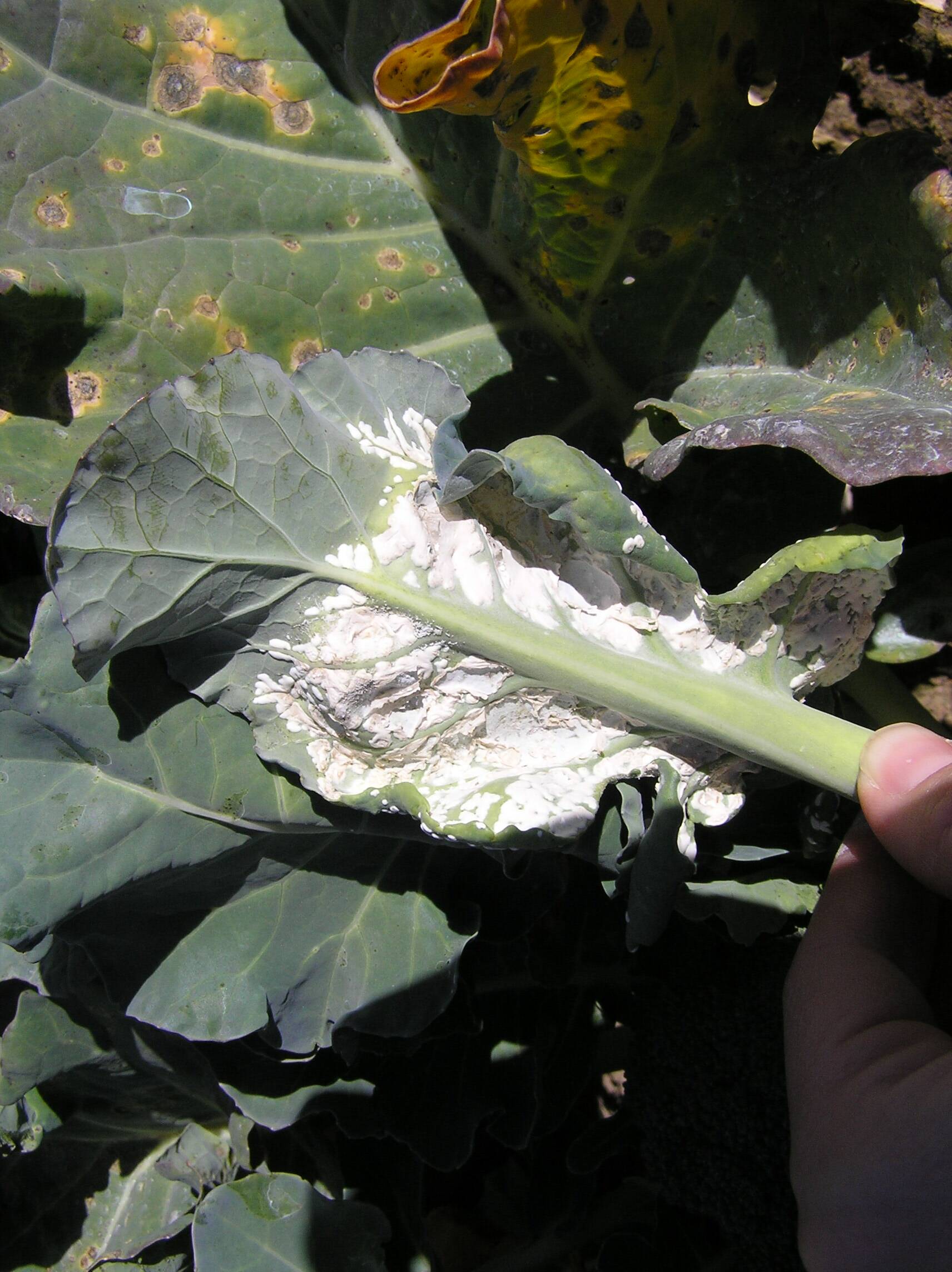
Lastly, broccoli can be susceptible to fungal diseases like downy mildew and black rot.
Good air circulation and avoiding overhead watering can help prevent these issues.
Common Problems
Yellow Leaves
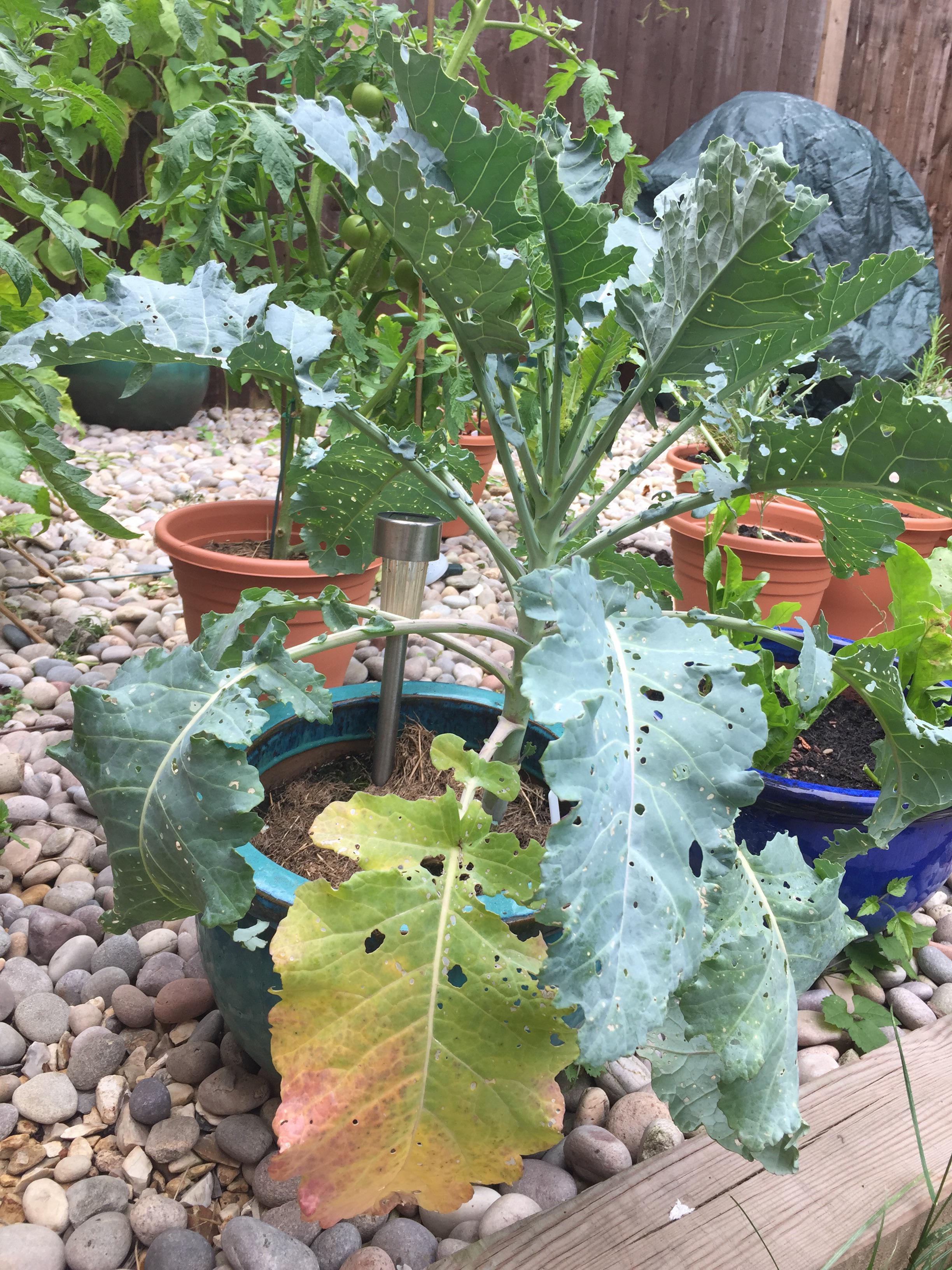
Yellow leaves can be a sign of several things, like overwatering, underwatering, or even a lack of nutrients.
Make sure your soil is well-draining and that you’re not drowning your plants. If the soil feels dry an inch below the surface, it’s time to water.
Also, consider giving your broccoli a balanced fertilizer to keep it happy and green.
Leggy Plants
Leggy plant happens when your broccoli isn’t getting enough light. Broccoli needs at least six hours of direct sunlight each day.
If you’re growing it indoors, place it near a south-facing window or use grow lights.
Harvest And Preservation
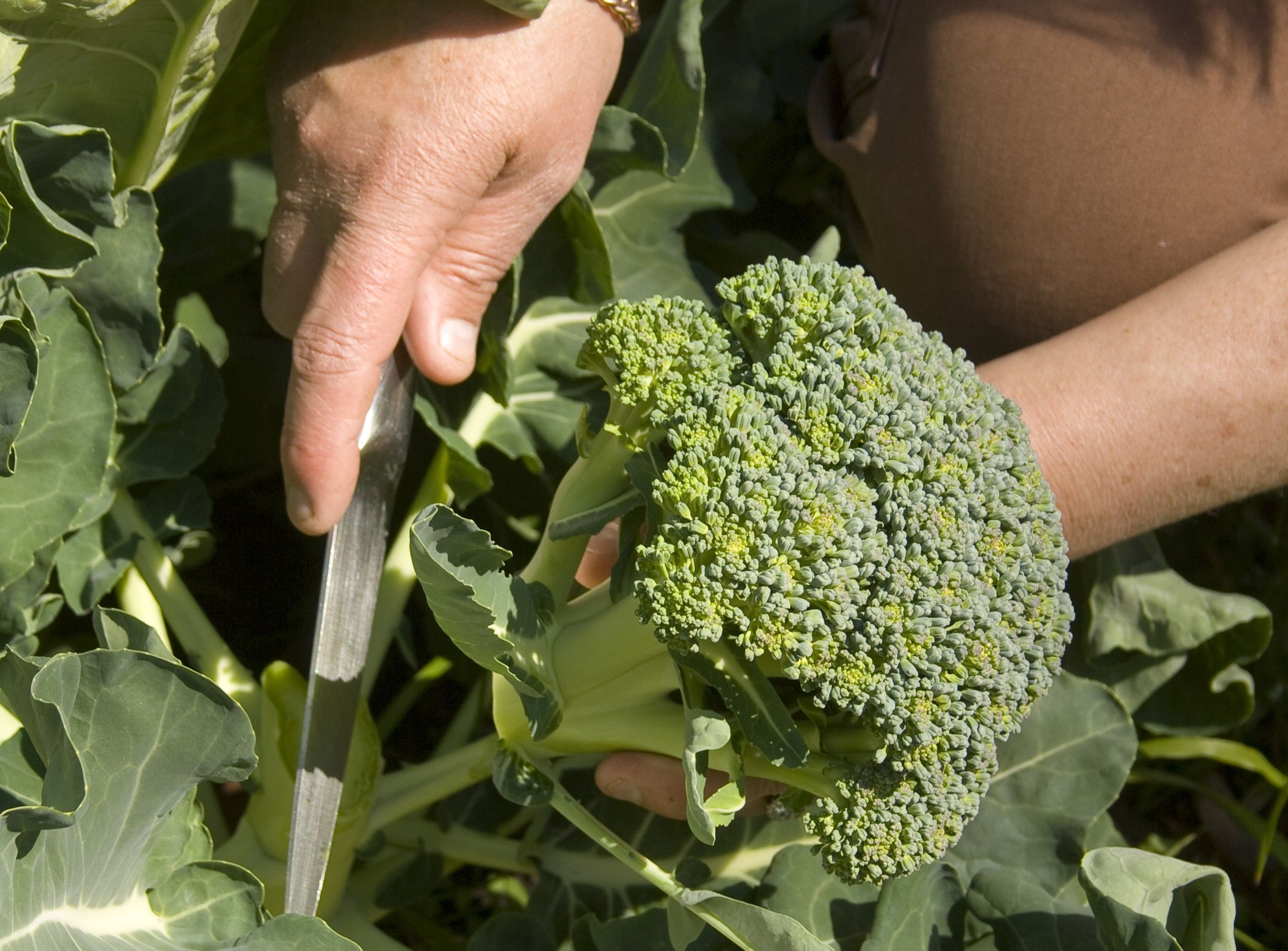
You know it’s time to harvest when the broccoli head is firm and the buds are tightly packed.
When you’re ready to harvest, cut the central head along with about 5-6 inches of the stem.
Make sure to cut at a slant; this helps water run off and prevents the stem from rotting.
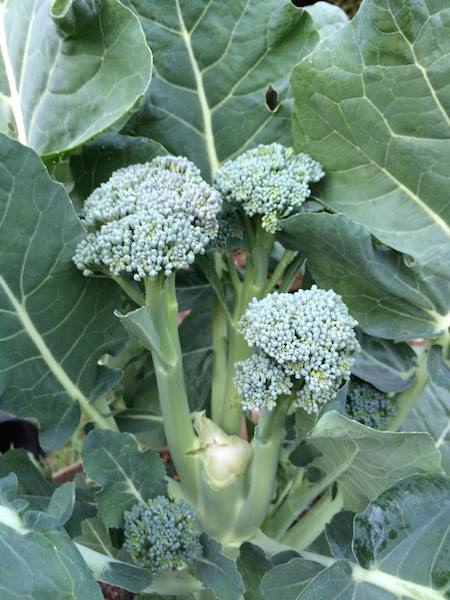
After you’ve harvested the main head, keep watering and caring for your plant.
Many broccoli varieties will produce smaller side shoots that you can harvest later. These little guys are just as tasty and nutritious as the main head.
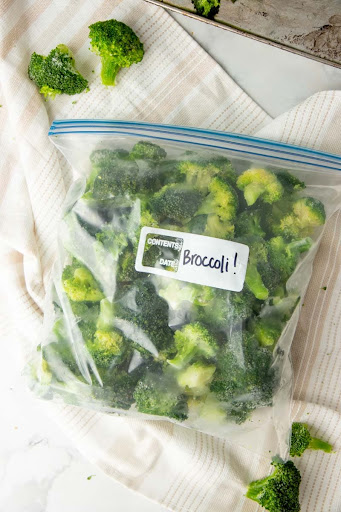
Once you’ve got your broccoli, you can either eat it fresh or store it. Fresh broccoli doesn’t last long, so if you can’t eat it all right away, consider freezing it.
